Three Die in New Round of Gaza Protests
Israeli fire has killed 25 Palestinians, including 19 protesters, in the past week, and Gaza's Hamas rulers say there will be more protests over the decades-long border blockade of the territory.KHUZAA, Gaza Strip—Israeli troops killed three men in the second mass protest in a week along Gaza’s volatile border, as Palestinians torched piles of tires to create a smoke screen to block the view of snipers.
Friday’s death brought to 25 the number of Palestinians killed by Israeli fire over the past week, including 19 protesters. Gaza health officials said 150 people were hospitalized Friday, but did not provide details on injuries.
Friday’s march was the second in what Gaza’s Hamas rulers said would be several weeks of protests against a decade-old border blockade of the territory. Israel has accused the Islamic militant group of using the protests as a cover for attacking Israel’s border, and has warned that those approaching the fence put their lives at risk.
On Friday, thousands of Palestinians streamed to five tent encampments that organizers had set up, each about several hundred meters from the border fence.
In one camp near the border community of Khuzaa, smaller groups of activists moved closer to the fence after Friday’s noon prayers.
Associated Press video showed demonstrators torching large piles of tires, engulfing the area in black smoke meant to shield them from Israeli snipers; the faces of some of the activists were covered in black soot.
Israeli troops on the other side of the fence responded with live fire, tear gas, rubber coated steel pellets and water cannons.
Later on Friday, the shadowy Hamas leader in Gaza, Yehiyeh Sinwar, visited the Khuzaa camp, receiving a hero’s welcome. He was surrounded by hundreds of supporters who chanted, “We are going to Jerusalem, millions of martyrs.”
Sinwar told the crowd that the world should “wait for our great move, when we breach the borders and pray at Al-Aqsa,” referring to the major Muslim shrine in Jerusalem.
It appeared to be the first time a Hamas leader specifically threated to break through the border — something Israel has said it would not allow at any price.
The Israeli military said protesters on Friday hurled several explosive devices and firebombs under cover of smoke, and that several attempts to cross the fence were thwarted. The military said it brought in a huge fan to disperse the tire smoke.
After the first tires started burning, several young men with gunshot wounds began arriving at a field clinic at the camp.
Mohammed Ashour, 20, who had been among the first to set tires on fire, was shot in the right arm.
“We came here because we want dignity,” he said resting on a stretcher before paramedics transported him to the strip’s main hospital.
Yehia Abu Daqqa, a 20-year-old student, said he had come to honor those killed in previous protests.
“Yes, there is fear,” he said of the risks of advancing toward the fence. “We are here to tell the occupation that we are not weak.”
Hamas had billed the final protest, set for May 15, as the “Great March of Return” of Palestinian refugees and their descendants, implying they would try to enter Israel. But the group stopped short of specifically threatening a mass breach of the border fence.
An Israeli military spokesman, Lt. Col. Jonathan Conricus, described the protests as “riots,” and said Hamas organizers are trying to use them to “insert terrorists into Israel.”
“If they are actively attacking the fence, if they are throwing a molotov cocktail that is within striking distance of Israeli troops or similar activities, then those persons, those rioters, become, may become, a target,” he said.
Israel has drawn sharp criticism for its open-fire orders along the border, including its warnings that those approaching or trying to damage the fence would be targeted.
The U.N. human rights office said Friday that it has indications that Israeli forces used “excessive force” against protesters last week.
Rights groups have branded orders permitting the use of lethal force against unarmed protesters as unlawful. A leading Israeli rights group, B’Tselem, issued a rare appeal to Israeli soldiers this week to refuse the “grossly illegal” open-fire orders.
Conricus said that under “clear rules of engagement” snipers are used “sparingly” and only against those that pose a “significant threat.”
A White House envoy urged Palestinians to stay away from the fence. Jason Greenblatt said the United States condemns “leaders and protesters who call for violence or who send protesters — including children — to the fence, knowing that they may be injured or killed.”
In all, 25 Palestinians were killed in Gaza over the past week, including 19 protesters, according to Gaza health officials.
The six other deaths included three gunmen killed in what Israel said were attempts to attack the border fence and three men who were struck by Israeli tank fire.
The turnout has apparently been driven by the organizational prowess of Hamas as well as the growing desperation of Gaza residents who live in what has been described as the world’s largest open-air prison.
The crowd size was seen as a test for Hamas, which seized the territory in 2007 from its political rival, Palestinian President Mahmoud Abbas, after winning legislative elections the previous year.
Ahead of Friday’s march, Hamas announced it would pay compensation to families of those killed or injured, ranging from $200 to $500 per injury and $3,000 per death.
The mass protests are perhaps Hamas’ last chance to break a border blockade enforced by Israel and Egypt since 2007, without having to succumb to demands that it disarm.
The blockade has made it increasingly difficult for Hamas to govern. It has also devastated Gaza’s economy, made it virtually impossible for people to enter and exit the territory and left residents with just a few hours of electricity a day.
Israel argues that Hamas could have ended the suffering of Gaza’s 2 million people by disarming and renouncing violence.
Hamas has refused to give up its weapons — even at the cost of derailing talks on getting Abbas to assume the burden of governing Gaza, seen by Israel and Egypt as a prerequisite for opening Gaza’s borders.
___
Associated Press writers Karin Laub and Mohammed Daraghmeh in Ramallah, West Bank, Ian Deitch in Jerusalem, and Josef Federman on the Gaza border contributed to this report.
Your support matters…Independent journalism is under threat and overshadowed by heavily funded mainstream media.
You can help level the playing field. Become a member.
Your tax-deductible contribution keeps us digging beneath the headlines to give you thought-provoking, investigative reporting and analysis that unearths what's really happening- without compromise.
Give today to support our courageous, independent journalists.
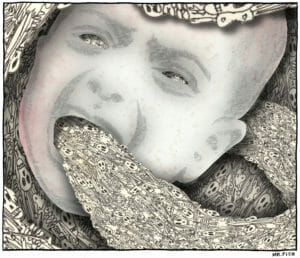
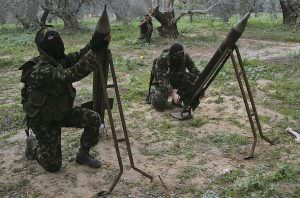
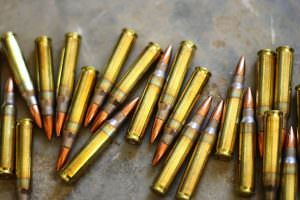
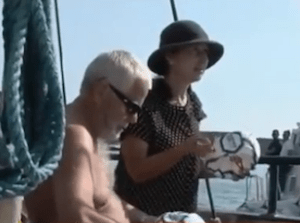
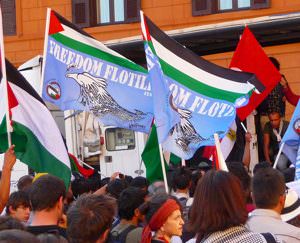
You need to be a supporter to comment.
There are currently no responses to this article.
Be the first to respond.